#earthwork services
Explore tagged Tumblr posts
Text

Get the best earthmoving services for your residential and commercial sector with the help of experts at Southern Civil Group. We are a family-owned earthmoving specialist Batemans Bay, who will provide you such an amazing and time-saving services. Contact or call us today for an amazing service.
0 notes
Text
Looking for cleaning up your property?? Give us a call for your free estimate 504-650-1898 https://bit.ly/Call-KNB

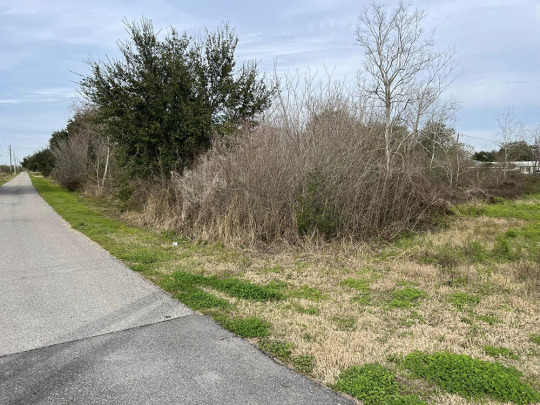

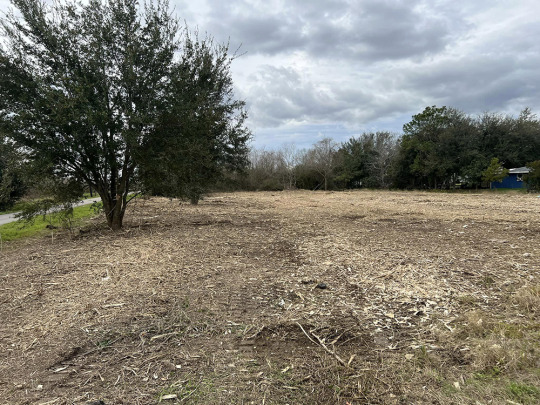
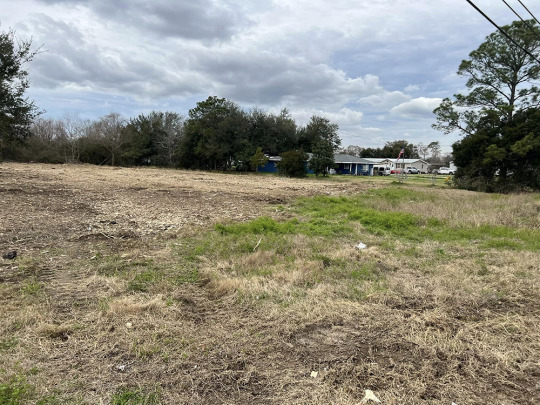
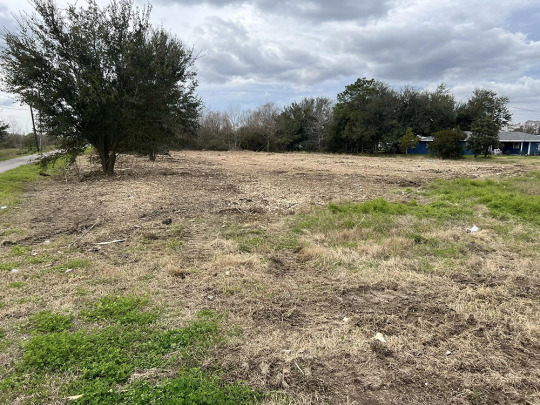
#tree removal services#earthwork#land#land development#mulching#landclearance#cleanupcrew#spring cleaning
2 notes
·
View notes
Text
Earthworks Construction: Comprehensive Solutions for Efficient and Sustainable Earthmoving
At MDM Mining & Civil, our Earthworks Construction services are designed to provide efficient and reliable solutions for all your earthmoving needs. Specializing in Earthworks Construction, we offer a comprehensive range of services tailored to meet the demands of various construction projects. Whether you are undertaking a large-scale mining operation or a residential development, our expertise in Earthworks Construction ensures that your project is completed on time and within budget.
Our Earthworks Construction services include site preparation, excavation, grading, and backfilling. With a focus on precision and efficiency, we utilize state-of-the-art equipment and advanced techniques to handle projects of all sizes. Our team of skilled professionals is dedicated to delivering high-quality results, ensuring that your site is ready for the next phase of construction.
MDM Mining & Civil Pty Ltd provides cost-effective and superior earthmoving and survey services to the Australian resources, construction, and civil industries. Our services are accessible for projects in regional and remote areas throughout Western Australia.
MDM Mining & Civil understands the importance of sustainable practices in Earthworks Construction. We are committed to minimizing environmental impact by implementing eco-friendly methods and adhering to industry standards. Our approach to Earthworks Construction emphasizes the use of sustainable materials and practices, contributing to a greener and more responsible construction process.
With years of experience in the Earthworks Construction industry, we pride ourselves on our ability to tackle complex projects and deliver outstanding results. Our team works closely with clients to understand their specific needs and provide customized solutions that meet project requirements. From initial planning to final execution, we are committed to ensuring that every aspect of your Earthworks Construction project is handled with the utmost care and professionalism.
Choose MDM Mining & Civil for your Earthworks Construction needs and experience the difference that expertise, reliability, and dedication can make. For more information, visit us at https://www.mdmminingcivil.com.au/civil-earthworks
#Earthworks Construction#Earthmoving Services#Sustainable Earthworks#Construction Earthmoving#Earthworks Solutions
0 notes
Text
How Long Does Road Construction Take in Mildura?
The duration of road construction in Mildura projects can vary significantly based on several factors. As a trusted civil contractor Mildura, B & S Earthworks is committed to providing efficient and timely services. Here's what you need to know about the typical timelines for road construction Mildura.
Project Scope and Size:
The size and scope of the project are primary determinants of the construction timeline. Smaller projects, like minor road repairs or short stretches of new road, may take a few weeks to complete. In contrast, larger projects, such as major roadways or highway expansions, can take several months to over a year.
Environmental and Weather Conditions:
Weather conditions play a crucial role in road construction Mildura. Mildura’s climate can impact construction schedules, particularly during the wet season when heavy rains can cause delays. Planning around seasonal weather patterns helps mitigate potential disruptions.
Permits and Approvals:
Obtaining the necessary permits and approvals is a critical step that can affect timelines. A local civil contractor Mildura, like B & S Earthworks, is familiar with local regulations and can expedite this process. However, unforeseen delays in approval can still impact the overall schedule.
Material Availability and Supply Chain:
The availability of materials and the efficiency of the supply chain are also important. Any delays in procuring essential materials like asphalt, concrete, and machinery can slow down progress. Working with reliable suppliers ensures that materials are delivered on time, keeping the project on track.
Labour and Equipment:
The availability of skilled labour and the right equipment is vital for maintaining construction timelines. B & S Earthworks employs a dedicated team and utilises advanced machinery to ensure that road construction Mildura projects proceed smoothly and efficiently.
In conclusion, the time required for road construction Mildura depends on factors such as project scope, weather conditions, permit approvals, material availability, and labour resources. At B & S Earthworks, we strive to complete all projects promptly while maintaining the highest standards of quality. For reliable and efficient road construction Mildura services, contact us today. We are your trusted civil contractor Mildura, ready to meet all your construction needs.

#road construction mildura#road construction works in mildura#road construction company mildura#road construction services mildura#road construction#road construction vic#road construction victoria#road construction mildura victoria#road contractors#road contractors mildura#expert road contractors mildura#pro road contractors mildura#b & s earthworks road construction mildura#b & s earthworks#b & s earthworks road contractors mildura
0 notes
Text
5 Important Tips For Loading and Trenching in Excavation
Loading and trenching are two significant parts of excavation. Most top Earthworks Sydney companies use these two procedures to complete their job. Trenching is the process of digging up the site while loading is the transport of the excavated materials to another site. In this blog, let’s learn about some important tips for loading and trenching in excavation.
Top Tips For Loading and Trenching in Excavation
Choosing a good Earthworks Services Campbelltown is essential for excavation. Besides that, following some useful tips for loading and trenching is also important. Keep reading to explore these crucial tips. Let’s get started:
1. Setting Everything Up
The most important step for trenching is setting up everything to make the entire area danger-free. Since trenching is associated with several risks, excavation companies have to ensure that trenches are supported by advanced equipment to avoid accidents.
Before setting up the trenches, the company should ensure that the excavated materials are properly planned to avoid accidents. Marking the area is also important as that will indicate the trenching.
2. Aligning the Equipment
Once the paint lines are set, the professionals will start the digging process with the lines. However, it’s important to align the equipment so they can carry out trenching along the paint lines. If the process is carried out in a dangerous area, the Sydney excavation services team has to use mandatory equipment to ensure safety.
3. Cleaning The Trench Area
Keeping the entire area clean before trenching is another crucial tip in excavation. When an excavation is being carried out, the professional will make sure the area stays debris free. It will help the truck to accumulate more deposits that need to be transferred to another area.
Civil Scope Earthworks, a trusted company, always ensures that the disposal of debris and soil is done to keep the area safe. Most professional teams maintain at least 2 foot distance between the trench and the disposal area.
4. Checking The Maximum Capacity
An excavation team needs to make sure that the appropriate attachments are used while carrying out the loading process. Plus, the excavator has to determine the maximum capacity of the materials before starting the loading process. By following this tip, the professionals can avoid major accidents and save time.
5. Positioning Haul Truck
Another important tip for excavation loading is positioning the haul truck. The haul truck needs to be positioned in the right place to avoid unnecessary round trips that will delay the loading process. Reputed excavation companies like Civil Scope Earthworks use the latest technologies and equipment to check obstacles and underground lines. Therefore, this can save a lot of time and prevent accidents.
Conclusion
Civil Scope Earthworks is a trusted excavation company in Sydney. They are well-known for having a highly skilled and experienced team. This company has worked on multiple projects across the city. Contact the team to get more details.
#demolition contractors sydney#earthworks services sydney#excavation contractors sydney#site demolition sydney#demolition sydney#sydney excavation services#excavation services sydney#sydney earthworks#excavation sydney
0 notes
Text
Top-Quality Rock Breaking Services for Adelaide Projects
Willunga Earthmoving: Your Expert Partner for Rock Breaking in Adelaide
When it comes to professional rock-breaking services in Adelaide, Willunga Earthmoving is your trusted local expert. We are a family-owned and operated business with over 25 years of experience as licensed general builders, ensuring top-quality workmanship and friendly service. Our team is dedicated to providing the best solutions for your rock-breaking needs. Whether your project involves excavations, construction, or land development, we have the skills and equipment to handle it all.
At Willunga Earthmoving, we offer an array of earthmoving services, including specialised rock breaking, to clients in Adelaide and its surrounding regions. Our dedication to efficiency, safety, and professionalism sets us apart, making us the preferred choice for all your rock-breaking needs. Your project’s success is our top priority.

Rock Breaking Services in Adelaide: Transforming Tough Terrain
Our rock-breaking services are tailored to tackle the most challenging terrains and provide effective solutions for various construction and earthmoving projects. We understand the unique demands of dealing with hard and rocky surfaces in Adelaide, and we offer specialised expertise for the following applications:
Site Preparation: If your construction site is hindered by rocky outcrops, our rock-breaking services ensure a level and secure foundation for your project.
Excavation: In rocky terrains, our rock-breaking expertise simplifies the removal and management of rocks, facilitating smooth excavation.
Foundation Work: Constructing strong foundations requires the removal of rocks, and our rock-breaking services guarantee a stable base for your structures.
Land Clearing: Whether you’re developing land or landscaping, our rock-breaking services turn rocky landscapes into usable spaces.

The Benefits of Choosing Willunga Earthmoving for Rock Breaking in Adelaide
Why should you choose Willunga Earthmoving for your rock-breaking needs in Adelaide? Here are the compelling reasons:
Safety First:- Your safety and that of our team are paramount. We adhere to strict safety measures to ensure secure work environments. Qualified Team:- Our operators are fully qualified, licensed, and highly skilled, guaranteeing expert rock-breaking services. Compliance and Insurance:- Willunga Earthmoving is fully insured and compliant with current industry standards, offering peace of mind throughout your project. Family-Owned Values:- As a family-owned business with over 25 years in the construction industry, we treat your project as if it were our own, delivering excellent customer support, premium service, and workmanship. Diverse Equipment Fleet:- Our extensive equipment fleet ensures we have the right tools for every job, regardless of size or complexity. Customised Project Solutions: We recognise that every project is unique. We work closely with you to understand your specific needs and provide tailored solutions for your project’s success.
For More Information:-
Address:- Willunga, Adelaide- Australia
Contact :- 0405 256 938
#Rock Breaking Adelaide#Adelaide Rock Removal#Earthmoving Services Adelaide#Adelaide Excavation#Professional Rock Breaking#Rock Blasting Adelaide#Adelaide Earthworks#Rock Removal Services#Adelaide Demolition Services#Willunga Earthmoving#Adelaide Construction Services#Site Preparation Adelaide#Heavy Machinery Adelaide#Adelaide Land Clearing#Rock Breaking Experts
0 notes
Text
Earthworks: The Foundation of Fire Protection - Safeguarding Lives and Land
Introduction:
In the realm of fire protection, the significance of earthworks often takes a back seat to the high-tech systems and cutting-edge equipment that capture our attention. However, the role of earthworks is pivotal, serving as the foundational support for robust fire protection infrastructure. In this blog, we explore the crucial connection between earthworks and fire protection, highlighting how this often-overlooked aspect plays a key role in safeguarding lives and land.
The Ground Beneath Our Safety:
Site Preparation:
Before any fire protection system can be installed, the ground must be prepared to support the infrastructure. Earthworks involve the reshaping and grading of the land to create a stable foundation for buildings, fire hydrants, and other essential components of a fire protection plan.
Access Roads and Clearings:
Efficient access is paramount during emergencies. Earthworks are essential in creating access roads that allow firefighting vehicles to reach the site quickly. Clearings are also established to provide space for equipment deployment and maneuverability.
Building on Solid Ground:
Foundation for Fire Hydrants:
Fire hydrants, crucial components of any fire protection system, require a stable foundation. Earthworks ensure that these hydrants are securely anchored to the ground, providing reliable access to water for firefighting efforts.
Structural Stability:
Earthworks contribute to the stability of structures housing fire protection equipment. Whether it's a fire station, control center, or storage facility, a solid foundation is essential to ensure the reliability and longevity of these structures.
Water Management and Drainage:
Stormwater Management:
Effective stormwater management is integral to preventing flooding and water damage. Earthworks play a vital role in shaping the landscape to control the flow of stormwater, directing it away from critical infrastructure and preventing potential water-related disasters.
Retention Ponds:
Earthworks may include the creation of retention ponds designed to collect and manage excess water. These ponds serve as a valuable resource during firefighting efforts, providing a controlled water source for emergency response teams.
Environmental Considerations:
Erosion Control:
Earthworks incorporate measures to control erosion, protecting the landscape from degradation. This is crucial not only for maintaining the integrity of fire protection infrastructure but also for preserving the surrounding environment.
Landscaping for Fire Breaks:
Strategic earthworks can create natural fire breaks by modifying the terrain. This proactive approach helps mitigate the spread of fires, providing an additional layer of protection for both urban and wildland areas.
Conclusion:
As we marvel at the advanced technology and intricate systems that comprise modern fire protection, it's essential to recognize the unsung hero beneath our feet – earthworks. From providing a stable foundation for critical infrastructure to shaping the landscape for optimal water management, earthworks are the silent architects of fire protection, ensuring that our communities and environments remain safe and secure. Through a harmonious blend of technology and earthworks, we build a resilient defense against the unpredictable force of fire, fostering a world where lives and land are protected.
0 notes
Text
1 note
·
View note
Text
Unveiling The Intricacies Of Excavation: Delving Deeper During Construction
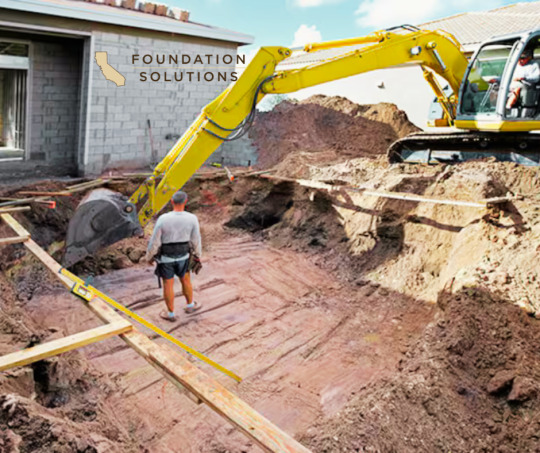
Excavation: the simple term encapsulates a myriad of skills, procedures, and safety measures that contribute significantly to every construction project. Most construction work begins with the careful removal of earth, making a hole or channelling the ground to prepare for the erection of buildings or laying of pipelines. As commonplace as it might seem, excavation is a crucial part of construction that requires extensive planning, expertise and precision.
To begin with, what exactly is excavation? Technically, it’s the process of moving earth, rock or other materials from a site with tools, equipment, or explosives. It includes earthwork, trenching, wall shafts, tunnelling and underground. Yet, in the context of construction, excavation extends beyond mere digging. It modulates the terrain to suit the structural requirement, ensuring the safety and stability of the ensuing structure.
At the heart of every excavation project is the objective to create a stable, safe, and efficient worksite. Basic excavation work typically follows the same series of steps. First, a site assessment is undertaken to determine the composition and stability of the soil, presence of water or rock layers, and any potential hazards. The comprehensive analysis garnered from this assessment then directs the excavation strategy.
Next comes site preparation, which involves clearing the area of any vegetation, debris, or existing structures. This process ensures a clean slate for construction work while minimising the risk of accidents and disturbances during excavation. Benching or sloping techniques could also be implemented on the site to prevent collapse or landslide from happening, thus achieving safety protocol adherence.
The actual excavation work is executed in a carefully measured and precise manner. Whether it’s done manually with shovels and wheelbarrows or mechanically with bulldozers, excavators and backhoes, the work is always carried out meticulously. Technology has indeed become an integral part of excavation, with engineers using software to model excavations prior to deployment, minimising surprises or miscalculations.
Trench excavation is another common practice where a narrow excavation is crafted that is deeper than it is wide. Used mostly for laying pipes, cables and service lines, trench excavation greatly increases the safety of workers by preventing cave-ins and providing easy access to the worksite.
Wet Weather excavation is a challenging scenario frequently encountered on work sites. Here, strategic measures are taken to handle water accumulation. Pumps can be used to remove water, and dewatering methods may be deployed to minimize the water table level.
Post excavation work, structures are erected, pipes are laid, and soil is replaced around the new structure or channel. Again, this is done with extreme care to ensure the stability of the structure and prevent unnecessary exertion of pressure.
In every construction project, the importance of excavation can’t be overstated. It lays the foundation for a safe and successful build. Despite it being a process often overlooked or simplified by laymen, and sometimes perceived as the mundane act of digging, it is, in fact, a scientific procedure replete with precision and tactical stratagems, rivalling the complexity of the structure it prepares ground for.
From the analysis of soil composition to the final touch of replacing the removed dirt, excavation attests to the power of human intervention over nature, moulding the earth to suit the burgeoning demands of urban structures and infrastructures. Understanding its finer details, we may appreciate more deeply the caveats of the construction world and marvel at the impressive structures made possible by these complex and elemental earth movements.
Tagged Construction, Excavation, Foundation Solutions, Intricacies Of Excavation
#Construction#Excavation#Foundation Solutions#Intricacies Of Excavation#foundation repair#foundation contractor#foundation experts#signs of foundation problems#foundation repair near me#foundation services#foundation repair solutions#residential foundation repair services#foundation solution
7 notes
·
View notes
Text
0 notes
Text

Upping the Ante: The Garden Resource Program
But the big leap forward for Detroit’s urban farming movement came in 2003, when the Earthworks Farm joined forces with the Detroit Agriculture Network, the Greening of Detroit (an organization primarily focused on reforesting the city), and the Michigan State University Extension Service, to found the Garden Resource Program Collaborative. The Garden Resource Program (GRP) which grew out of that collaboration started by providing seeds and some gardening resources (tilling, compost, etc.) to 39 community gardens and 41 family garden participants. But the program has grown by leaps and bounds, so that now the GRP provides a multitude of training classes, technical assistance and advice, marketing guidance, etc., in addition to providing seeds and seedlings to community and individual gardens across the city. For the price of GRP membership ($10 for family gardens; $20 for community gardens), members are able to pick up spring seeds in late March, cold crop transplants in April, warm-weather seeds and sets in May, and fall crop transplants in mid-summer, with all seedlings being grown organically at the Earthworks Farm.
During the 2008 growing season, the Garden Resource Program provided resources to 169 community gardens, 40 school gardens, and 359 family gardens within the city. In the process it distributed 32,320 packets of seeds and approximately 129,360 transplants! The 40 by 60 foot greenhouse at Earthworks farm is now working at capacity to provide those transplants, and the growth of the Garden Resources Program is still accelerating.
But the Garden Resources Program seeks to provide more than just gardening resources and skills. The GRP consciously strives to make the urban farming a communitybuilding activity. By emphasizing community gardens, where the work and the produce are shared, and community garden events and celebrations (community work days, picnics and cook-outs, meetings to plan, evaluate, and share experiences, etc.), the GRP helps strengthen community bonds as it enlivens the communities in which it operates. Megan Kohn, an Americorps volunteer serving on staff for the Garden Resource Program, came to Detroit “... to practice small-scale, intensive growing practices [because]...more people need to be growing food close to where they live...” Her immersion in the Garden Resource Program, however, caused her to “come to a deep realization that the work is so much more about the people, and the connection between people... Neighbors growing food together is powerful. We are literally building an alternative food system here...”
#garden resource program#small farms#urban gardening#urban farming#detroit#solarpunk#small farm movement#community building#practical anarchy#practical anarchism#anarchist society#practical#revolution#anarchism#daily posts#communism#anti capitalist#anti capitalism#late stage capitalism#organization#grassroots#grass roots#anarchists#libraries#leftism#social issues#economy#economics#climate change#climate crisis
12 notes
·
View notes
Text
Excerpt from this review of the book, "The Great River," from Grist:
In his new fascinating book The Great River, the writer Boyce Upholt tells the story of the Mississippi through the men who have sought to master the river for well over two centuries. Ranging across thousands of miles, he demonstrates how the United States has deformed and manipulated one of the world’s largest watersheds in the short-sighted service of economic development, often with catastrophic consequences. Since the 19th century, the U.S. Army Corps of Engineers has spent untold billions of dollars to dredge, levee, dam, undam, channelize, divert, reroute, and re-reroute the river, attempting to control flooding and facilitate navigation for freight. The squabbling engineers who have led the Corps are the closest that Upholt gets to main characters, and their stories function as parables about the relationship between the U.S. and the environment it sought to colonize and reshape. The most famous of these stories was the contest between James Buchanan Eads, a brilliant civil engineer who advocated making space along the river’s banks for its water to flow and flood, and Andrew Humphreys, an Army general who advocated sealing most of the river off with man-made levees. Humphreys won the debate, with catastrophic results: In 1927, as the Corps was finalizing its levees along the lower river, a massive flood burst through them and inundated much of Louisiana and Arkansas, killing 500 people and displacing hundreds of thousands more. The pinnacle of the book is when Upholt visits the Old River control system, which was designed to hold the Mississippi in place. As he approaches the site, Upholt sees “concrete wing walls flare outward, funneling water toward a series of five steel gates” held in place by giant beams, and then “just upstream a second line of gates, six times longer, looms over a patch of batture…from a concrete catwalk built along the confluence, the river looked like a varicose vein…so swollen that it was ready to pop.” It’s hard to comprehend the modern Mississippi until you’ve seen this structure. Its hubris typifies the destructive human effort Upholt is trying to depict throughout the book, and holds a lesson for regions and nations attempting to tackle the threat of climate change. If the world’s wealthiest and most powerful nation struggled to tame nature before the earth warmed by a degree and a half, it does not bode well for its efforts to fend off sea-level rise with concrete walls or solve drought problems by constructing more dams. As Upholt makes clear in the end, the solution isn’t just to tear everything down. Rather, he points us back to the Indigenous earthworks that preceded colonization, relics of a society that tried to live with the rhythms of a flood-prone river rather than change those rhythms to suit human needs.
7 notes
·
View notes
Text
What Are Common Irrigation Problems in Mildura and How Can They Be Fixed?
Maintaining effective irrigation systems is crucial for agriculture in Mildura. However, several common issues can affect the efficiency of irrigation works Mildura. Understanding these problems and knowing how to fix them can ensure optimal water use and crop health.
Clogged Nozzles:
Clogged nozzles are a frequent issue. Dirt, debris, and mineral deposits can block water flow, leading to uneven distribution. To fix this, regularly inspect and clean nozzles using a fine needle or brush. Installing filters in your irrigation works Mildura can also prevent clogs.
Uneven Water Distribution:
Uneven water distribution can result from improper system design or wear and tear. Check for leaks, ensure sprinklers are properly aligned, and adjust water pressure. Regular maintenance and system audits can help maintain balanced irrigation works Mildura.
System Leaks:
Leaks cause significant water wastage and affect efficiency. Common causes include damaged pipes and loose fittings. Regularly inspect for visible leaks and listen for hissing sounds. Promptly repair or replace damaged parts to maintain efficient irrigation works Mildura.
Inadequate Water Pressure:
Low water pressure hinders performance and results in insufficient coverage. Causes include clogged filters, leaks, or pump issues. Clean filters regularly, repair leaks, and ensure the pump functions correctly. Proper system design and maintenance prevent pressure-related problems in irrigation works Mildura.
Scheduling Issues:
Improper scheduling leads to overwatering or underwatering, affecting plant health. Use automated controllers to manage watering schedules. Adjust timing and frequency based on weather and soil moisture levels for optimal irrigation works Mildura.
Conclusion:
Addressing common problems such as clogged nozzles, uneven distribution, leaks, low pressure, and scheduling issues is vital for efficient irrigation works Mildura. Regular maintenance and professional help keep your system running smoothly. B & S Earthworks specialises in providing top-notch irrigation solutions tailored to your needs in Mildura. Contact us today for all your irrigation needs.

#irrigation works mildura#irrigation works victoria#irrigation works service mildura#irrigation works service victoria#irrigation works company mildura#irrigation works company victoria#expert irrigation works mildura#professional irrigation works mildura#expert irrigation works victoria#professional irrigation works victoria#b & s earthworks irrigation works#b & s earthworks
0 notes
Text
https://civilscopeearthworks.com.au/earthworks/
Are you in need of excavation, land clearing, or other earthworks services? Our earthworks services in Campbelltown, Sydney are essential for a variety of projects, from construction and landscaping to demolition sydney and site preparation. Whether you’re a homeowner looking to enhance your property or a developer in need of professional excavation services, it’s important to choose a reputable and experienced earthworks and excavation company to ensure your project’s success.
#demolition contractors sydney#excavation contractors sydney#earthworks services sydney#site demolition sydney#demolition sydney#sydney earthworks#sydney excavation services#excavation services sydney#excavation sydney
0 notes
Text

The Building of Fort Meigs, 1813 (Mural Study, Perrysburg, Ohio Post Office), Glenn M. Shaw (1891–1981) (detail, Wikimedia Commons)
The British artillery bombardment of Fort Meigs in 1813 is usually seen as ineffectual: Henry Procter the British commander did not place his guns in optimal locations, even when Tecumseh and his chiefs prepared them, and most shot cleared the fort or landed harmlessly on the interior earthworks.
It was still an ordeal for the American defenders. Alfred M. Lorrain of the Petersburg Volunteers later wrote:
After the sortie, we visited the hospital. Reclining on a bed in one corner lay a gallant officer, who was attached to the engineer department. He had rendered much service from the beginning of the war, and his courage was unquestionable. But now, in consequence of the irritation of his nerves by the roar of artillery, the bursting of bombs, the pain of his wounds, and his feverish condition, he had become as timid and as peevish as a child, and was constantly apprehensive of being torn to pieces by a cannon-ball.
— The Helm, the Sword, and the Cross
#War of 1812 Wednesday#war of 1812#fort meigs#alfred lorrain#military history#petersburg volunteers#war trauma#dressed to kill#1810s#us army
21 notes
·
View notes